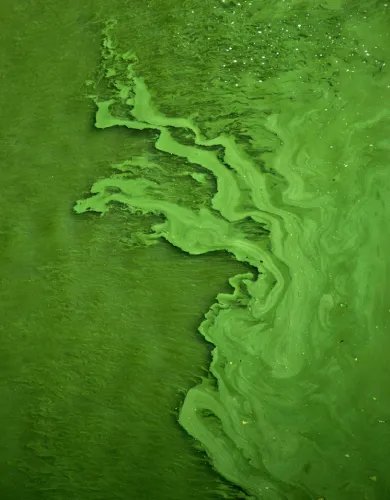The environmental impact of the water industry
The British water network is amazing. Fifty million properties across the country receive a reliable supply of high-quality fresh water. Most of us take the convenience of readily available fresh water for granted. Unfortunately, it comes at an environmental cost.
This explainer explores the four key ways the British water industry hurts the environment and the simple steps we can all take to reduce its impact.
The four key ways the British water industry hurts the environment
1. Polluting rivers
The government’s Environment Audit Committee recently concluded that water companies regularly dump sewage into rivers.
Most people would be surprised to hear that sewage gets deliberately dumped into rivers. Shockingly, in 2020, there were 400,000 such instances. The World Wide Fund for Nature recently concluded that no river in the UK is safe for swimmers.
💡British Rivers are also polluted by fertiliser runoff from agriculture.
2. Pumping water around the country
The UK water network has four hundred thousand miles of pipes connecting properties to reservoirs. Moving potable water to your taps is no easy task, often involving pumping water across many miles and over natural obstacles such as hills.
Pumping stations require electricity to maintain pressure in the water network. The local water companies use a business energy supplier to provide the power the pumping stations require. In the UK, electricity generation requires burning fossil fuels in gas-fired power plants.
An Ofwat study found that water and wastewater pumping to and from homes and businesses contributes 600,000 tonnes of carbon dioxide each year into the atmosphere. Roughly the equivalent of 130,000 vehicles on the road.
3. Wastewater treatment
A crucial role of the water industry is to safely return the wastewater produced by properties into rivers and reservoirs. Wastewater includes water flushed in toilets, used in showers, and anything else put into your drain. The treatment process has multiple stages and involves:
- Initial screening to remove anything that shouldn’t be in wastewater, such as cotton buds and nappies.
- Removal of human waste using a settlement tank.
- Bacterial breakdown of microscopic impurities in an aerator tank.
- Sedimentation of the water to remove the byproducts of water treatment.
The European Commission estimates that wastewater treatment plants have a significant negative impact on greenhouse gases. The bacterial treatment of sewage produces two of the following greenhouse gases:
Methane – An odourless, flammable gas estimated to be 80 times worse than carbon dioxide. Worldwide wastewater treatment is estimated to contribute to 9% of human emissions.
Nitros Oxide – Commonly known as laughing gas, nitrous oxide is 300 times more harmful than a molecule of carbon dioxide. Wastewater treatment is estimated to contribute 3% of global emissions.
4. Leakage
The UK water network is an old network and suffers heavily from leakage. The network loses 3,000 billion litres of potable water per day, the equivalent of about one thousand Olympic swimming pools.
The leakage figure is, by its nature, an estimate and includes unregistered water supply points. Unregistered supply points are properties connected to the water network that water companies do not know about. In the non-household water network, these properties are called gap sites.
What can I do to reduce the environmental impact of my water supply?
The environmental consequences of providing a clean water supply across the country are often unavoidable. The easiest step we can all take is to stop using water unnecessarily.
You’ll be shocked at the water footprint of your daily life. It’s not just leaving the tap on when brushing your teeth; the food we eat and the things all require fresh water.
At AquaSwitch, we help businesses get more from their water supply. Check our detailed guide to reducing commercial water consumption.
Business water suppliers are conscious of the environmental impact of their services and are starting to offer green water tariffs.
A business water supplier will offset the carbon emissions associated with water by purchasing carbon credits in a green water tariff. Find out if your business can benefit from a green water tariff today with our business water comparison service.

